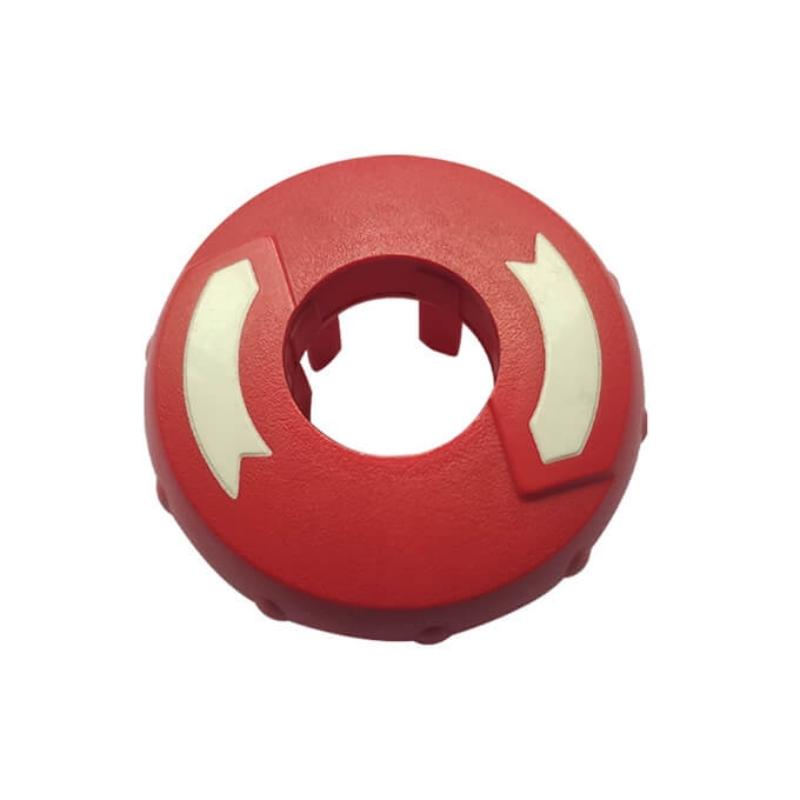What is the process of 2k injection molding?
- Two different plastic materials or colours are combined in a single injection moulding cycle by a process called two-shot injection moulding, also referred to as 2k injection molding. Using this method, complicated pieces with different material characteristics or hues can be produced.
- Two injection units on the same machine are used in the two-shot injection molding process; one unit injects the first material while the other injects the second. The first substance forms the part's base or substrate, while the second material forms the top layer or feature. The two materials are injected into a single mould cavity in two stages.
- The reduced manufacturing time, enhanced part quality, and higher design flexibility are benefits of this injection molding. This procedure eliminates the need for further assembly or post-molding procedures, making the production process more productive and economical. In manufacturing components, including instrument panels, buttons, and housings, this injection moulding is frequently utilized in the automotive, medical, and consumer electronics sectors.
A study of the 2K Injection Moulding Process Parameters:
This process must carefully control several factors to attain the necessary part quality and production efficiency, making it difficult to optimize. This study will look into this injection moulding process parameter and how it affects part quality and production effectiveness.
Parameters:
The mould temperature, cooling time, and ejection time are additional process variables that may impact the general quality of these injection moulded parts. The mould temperature needs to be carefully managed to ensure that the materials are filled and packed properly. The cooling period should be carefully calculated to reduce warpage and increase cycle duration. The ejection time needs to be precisely set to prevent causing damage to the pieces when taking them out of the mould. Two types of 2k injection molding process parameters may be made: those that influence the first shot and those that influence the second shot. The first injection of the first substance is referred to as the "first shot," and the subsequent injection of the second material is called the "second shot."
- First shot:
The injection pressure, speed, and melt temperature are important process variables impacting the first shot. These variables affect how the first material flows and is packed, which might impact the consistency and quality of the parts. Higher injection pressure and speed can enhance the first material's packing and raise the possibility of flash or sink markings. To ensure that the first material flows properly and completely fills the mould cavity, the melt temperature must be carefully regulated.
- Second Shot:
The second shot's process variables include the second material's melt temperature, injection pressure, and speed. These factors may affect the part's overall quality and the adherence of the two materials. Increased injection speed and pressure can strengthen the bond between the two materials but also raise the possibility of cavities or delamination. To achieve adequate flow and adhesion to the first material, the melt temperature of the second material needs to be carefully managed.
The Advantages of 2K Injection Moulding:
For companies wishing to make complex parts with varying material qualities or colours, two-shot injection moulding, commonly known as injection moulding, has much to offer. We'll go over some of the main advantages of this injection moulding in this post, along with how it can enhance your company's operations.

- Enhanced component quality:
The capacity to produce complicated pieces with various material qualities or colours in a single injection moulding cycle is one of the main advantages of this injection moulding. As a result, there is no longer a need for additional assembly or post-molding procedures, improving the parts' consistency and quality. By employing this injection moulding, we may create parts with more exact tolerances, better surface finishes, and greater functionality, which results in a higher-quality product for our clients.
- Shorter production duration:
The capability of this injection moulding to shorten production times and boost manufacturing effectiveness is another important advantage. The method eliminates the requirement for separate moulding processes, assembly, or post-molding procedures because it blends two different plastic materials or colours in a single injection moulding cycle. This may lead to shorter cycle times, cheaper labour, and a more effective production process.
- Elevated design versatility:
Additionally, this injection moulding provides greater design flexibility, enabling producers to develop parts with more intricate geometries and various material qualities. By combining two different materials or colours, we can produce pieces with distinctive visual or tactile qualities, such as soft-touch grips or translucent elements. We are distinguishing our goods on the market and providing clients with more valuable products.
- Reduced wasting of materials:
Additionally, this injection moulding can help increase sustainability by lowering material waste. The procedure can lessen the amount of material waste produced during manufacturing since it blends two different materials or colours in a single injection moulding cycle. This can lessen the manufacturing process' negative environmental effects and increase the general sustainability of the company.
- Cost saving:
Last but not least, this injection moulding can assist companies in saving money in several ways. We can reduce labour costs, material prices, and energy costs by shortening the production process, increasing manufacturing efficiency, and minimizing material waste. Businesses can also distinguish themselves in the market and charge more for our goods by making higher-quality parts with more complicated geometries and various material qualities.
Conclusion:
To produce a single, multi-material component, two different materials are injected into the same mould during the 2k injection molding process. This method is useful for producing intricate, high-quality components that need the blending two or more materials. Separate injections of the two components are made into the mould before they are mixed to form a single component. ACE can efficiently and economically make high-quality, multi-material parts by comprehending and managing these aspects.





